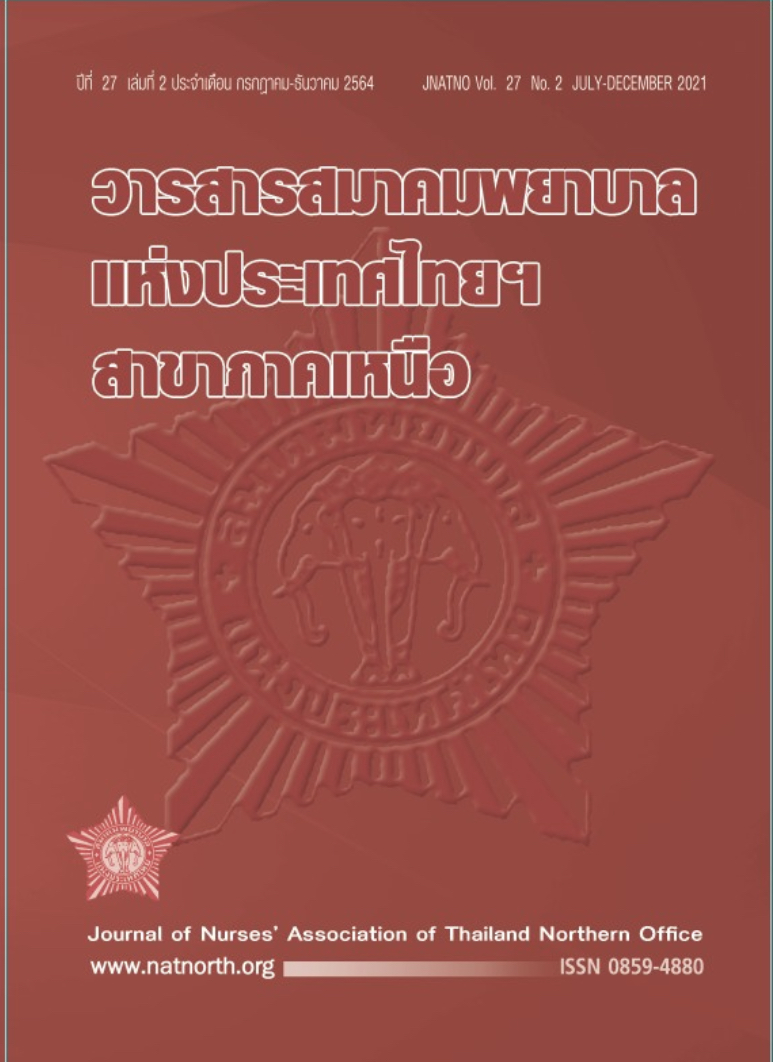ระบบการคัดกรองผู้ป่วยฉุกเฉินในโรงพยาบาลประสาทเชียงใหม
คำสำคัญ:
การคัดกรองผู้ป่วยฉุกเฉิน, ระบบการคัดกรองผู้ป่วยฉุกเฉิน, ประเภทผู้ป่วยฉุกเฉินบทคัดย่อ
การวิจัยเชิงพรรณนาครั้งนี้มีวัตถุประสงค์เพื่อศึกษาระบบคัดกรองผู้ป่วยฉุกเฉิน และหาแนวทางในการพัฒนาระบบการคัดกรองผู้ป่วยฉุกเฉินในโรงพยาบาลประสาทเชียงใหม่ กลุ่มประชากรที่ศึกษา ได้แก่ แพทย์และพยาบาลวิชาชีพที่ปฏิบัติงานในห้องฉุกเฉิน และแผนกผู้ป่วยนอก จำนวน 15 คน วิธีดำเนินการศึกษาใช้แนวคิดของวงจรการพัฒนาคุณภาพอย่างต่อเนื่อง PDCA (Plan-Do-Check-Act) ได้แก่การวางแผน การปฏิบัติการตรวจสอบ และการดำเนินการแก้ไข ขั้นตอนการศึกษาแบ่งเป็น 3ระยะระยะที่ 1 สืบค้นเอกสารแนวปฏิบัติการคัดแยกประเภทผู้ป่วย เก็บข้อมูลจากสถิติผู้ป่วยที่มารับบริการ อุบัติการณ์การคัดกรองผิดพลาด รวมถึงสอบถามประสบการณ์ในการคัดกรองผู้ป่วยจากกลุ่มประชากรที่ศึกษา ระยะที่ 2 สังเกตการคัดกรองและการจำแนกประเภทผู้ป่วย ระยะที่ 3 ทบทวนวรรณกรรม และนำข้อมูลที่ได้จากการศึกษามาวิเคราะห์เพื่อหาแนวทางในการพัฒนาระบบการคัดกรองผู้ป่วย พัฒนาแนวทางปฏิบัติคู่มือและเกณฑ์ในการคัดกรองผู้ป่วยฉุกเฉิน เพื่อนำมาใช้ในการคัดกรองผู้ป่วยและดูแลผู้ป่วย เครื่องมือที่ใช้ในการวิจัยได้แก่แบบสอบถามการปฏิบัติงานในการคัดกรองผู้ป่วยฉุกเฉิน แบบสัมภาษณ์และแบบสังเกต ทำการวิเคราะห์ข้อมูลเชิงปริมาณโดยใช้สถิติเชิงพรรณนาและจัดหมวดหมู่ข้อคิดเห็นจากการสัมภาษณ์และการสังเกต
ผลการวิจัย พบว่า หน่วยงานยังไม่มีระบบการคัดกรองผู้ป่วยฉุกเฉินที่ชัดเจน แต่มีขั้นตอนในการปฏิบัติงานการคัดกรองผู้ป่วยฉุกเฉิน พยาบาลที่ทำหน้าที่คัดกรองผู้ป่วยฉุกเฉินที่สามารถบอกขั้นตอนในการคัดกรองผู้ป่วยได้ครบถ้วนและเรียงลำดับได้อย่างถูกต้องมีเพียงหนึ่งคน จากการสังเกตการคัดกรองขอพยาบาลที่ทำหน้าที่คัดกรองผู้ป่วยฉุกเฉิน พบว่าสามารถประเมินอาการแรกรับผู้ป่วยฉุกเฉินได้อย่างถูกต้อง ส่วนร้อยละ40ไม่สามารถตัดสินใจระบุความเร่งด่วนได้อย่างถูกต้องในกรณีฉุกเฉิน และร้อยละ 70 ไม่ได้ประเมินความเจ็บปวดในผู้ป่วยที่มารับบริการสาเหตุหลักของการคัดกรองที่ไม่เหมาะสม ได้แก่ ระบบคัดกรองไม่ชัดเจน ความแตกต่างของประสบการณ์และความรู้ในการคัดกรองผู้ป่วย เครื่องมือในการจำแนกประเภท และการได้รับข้อมูลของผู้ป่วยที่ไม่ถูกต้องจากตัวผู้ป่วยและญาติแนวทางในการพัฒนาประกอบไปด้วย 1) การมีระบบการคัดกรองที่ชัดเจน 2) การมีแนวปฏิบัติและคู่มือการคัดกรองผู้ป่วย 3) การปฐมนิเทศและการฝึกอบรมให้แก่เจ้าหน้าที่อย่างต่อเนื่อง
การศึกษาระบบการคัดกรองผู้ป่วยฉุกเฉินในครั้งนี้ช่วยทำให้ทราบถึงระบบการคัดกรองผู้ป่วยฉุกเฉินในหน่วยงาน รวมทั้งทราบปัญหา สาเหตุของปัญหาในการคัดกรองผู้ป่วย เพื่อนำไปสู่แนวทางในการพัฒนาระบบการคัดกรองผู้ป่วยฉุกเฉิน ที่เหมาะสมกับบริบทของโรงพยาบาลต่อไป
เอกสารอ้างอิง
รัฐพงษ์ บุรีวงษ์. MOPH ED TRIAGE. พิมพ์ครั้งที่ 2. นนทบุรี: สำนักวิชาการแพทย์กรมการแพทย์ กระทรวงสาธารณสุข; 2561.
กงทอง ไพศาล. การพัฒนาเครื่องมือจำแนกประเภทผู้ป่วย งานอุบัติเหตุและฉุกเฉิน โรงพยาบาลพล จังหวัดขอนแก่น.วารสารพยาบาลศาสตร์และสุขภาพ 2554;34:57-64.
พจนา มิตรเปรียญ. การพัฒนาเครื่องมือการคัดแยกผู้ป่วย โรงพยาบาลกงหรา [อินเทอร์เน็ต].2561[18 มิถุนายน 2561].เข้าถึงได้จาก:http://203.157.229.18/ptvichakarn61/uploads/41193_030220180530230845_pdf.
กัลยารัตน์ หล้าธรรม.การศึกษาคุณภาพการคัดแยกประเภทผู้ป่วยฉุกเฉิน โรงพยาบาลศรีนครินทร์. การประชุมวิชาการเสนอผลงานวิจัยบัณฑิตศึกษาระดับชาติและนานาชาติ10 มีนาคม 2560 อาคารพจน์สารสิน มหาวิทยาลัยขอนแก่น ขอนแก่น; 2560.
อรวรรณ ฤทธิ์อินทรากุล วรวุฒิขาวทอง ปารินนท์คงสมบูรณ์และสมศรีเขียวอ่อน. การพัฒนาระบบการคัดแยกผู้ป่วยอุบัติเหตุฉุกเฉิน โรงพยาบาลสวรรค์ประชารักษ์จังหวัดนครสวรรค์. วารสารกรมการแพทย์ 2561;43:146-51.
สุปิยา ชัยพิสุทธิ์สกุล และวลีรัตน์ ปุเลทะตัง. การพัฒนาระบบการคัดกรองผู้ป่วยให้มีประสิทธิภาพ. โรงพยาบาลนาเชือก จังหวัดมหาสารคาม; 2559.
สถาบันการแพทย์ฉุกเฉินแห่งชาติ.คู่มือทางการปฏิบัติตามหลักเกณฑ์เกณฑ์และวิธีปฏิบัติการคัดแยกผู้ป่วยฉุกเฉินและจัดลำดับการบริบาล ณ ห้องฉุกเฉินตามหลักเกณฑ์ที่ กพฉ.กำหนด.พิมพ์ครั้งที่ 3. นนทบุรี: สถาบันการแพทย์ฉุกเฉิน; 2558.
Yuksen, C. Research on ESI Triage. Documentation of training criteria and procedures separate the Emergency: National Institute of Emergency Medicine; 2012. (In Thai)
McLaughlin, C.P. & Kaluzny, A.D. Continuous quality improvement in health care: theory, implementation, and applications. The United States of America; 1999.
สุคนธ์จิต อุปนันชัย และอารีย์วรรณ อ่วมตานี. ผลของการใช้รูปแบบการคัดกรองผู้ป่วยโดยใช้ดัชนีความรุนแรงฉุกเฉินต่อระยะเวลารอคอยของผู้ป่วยและการปฏิบัติบทบาทอิสระของพยาบาลวิชาชีพ แผนกอุบัติเหตุและฉุกเฉิน โรงพยาบาลกลาง. วารสารโรงพยาบาลเจริญกรุงประชารักษ์ 2560;13(2):90–101.
Thaikruea, L. Solving system strategy. Workshop for routinetoresearch;2018 November 16; 5th meeting room Chiang Mai Neurological Hospital. Chiang Mai; 2018.
พรทิพย์ วชิรดิลก ธีระ ศิริสมุด สินีนุช ชัยสิทธิ์ และอนุชา เศรษฐเสถียร. การคัดแยกผู้ป่วยของแผนอุบัติเหตุฉุกเฉินในประเทศไทย.วารสารสภาการพยาบาล 2559;31:96-108.
ดาวน์โหลด
เผยแพร่แล้ว
รูปแบบการอ้างอิง
ฉบับ
ประเภทบทความ
สัญญาอนุญาต
บทความที่ได้รับการตีพิมพ์เป็นลิขสิทธิ์ของสมาคมพยาบาลแห่งประเทศไทยฯ สาขาภาคเหนือ
เนื้อหาและข้อคิดเห็นใดๆ ที่ตีพิมพ์ในวารสารสมาคมพยาบาลฯ ถือเป็นความรับผิดชอบของผู้เขียนเท่านั้น ผู้เขียนบทความต้องศึกษารายละเอียดหลักเกณฑ์การจัดทำต้นฉบับตามที่วารสารกำหนด และเนื้อหาส่วนภาษาอังกฤษต้องได้รับการตรวจสอบจากเจ้าของภาษามาแล้ว


